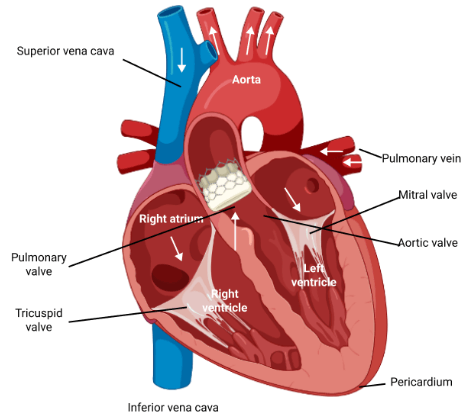Transportation in Animals and Plants Class 7 Extra Questions and Answers Free PDF Download
FAQs on CBSE Important Questions for Class 7 Science Transportation in Animals and Plants - 2025-26
1. What is the importance of transportation explained in Chapter 7 of Class 7 Science?
Transportation is important in living beings as it helps eliminate waste products from the body. Both in plants and animals, transportation helps to circulate essential nutrients, water, gases, and excretory products. Every cell in the living organism needs energy. The complex food molecules are broken down into simpler molecules and absorbed by the cells. Our body has a special transportation system that transports oxygen throughout the body and removes carbon dioxide. Likewise, in plants, transportation of materials takes place through a complex transportation system.
2. Why does the bleeding stop after a while?
When you get injured or have a cut on your body, bleeding occurs. It stops due to the clot formation in the blood. This process of clot formation is referred to as coagulation. During this process, platelets release some special protein molecules that help hold the blood cells firmly.
3. Write the definition of transportation.
Transportation is the process of the movement of molecules and ions through the cell membrane or bloodstream. In simple terms, transportation means carrying molecules from one place to another. Every organism requires oxygen and nutrients to conduct important life processes. Also, waste products produced inside the body need to be removed. Thus, the term transportation can be defined as a biological process in which essential nutrients are absorbed by specific organs and transported to other body organs.
4. Why is the transport of materials necessary in a plant or an animal?
Transportation of materials is necessary both in plants and animals because it helps them to grow properly. This process helps to carry out significant life processes. As every cell requires essential nutrients for proper growth and development, this biological process transports nutrients, water, and gases from one part of the body to another. Thus, transportation of materials is necessary.
5. How is transportation in plants different from that of transportation in animals?
In plants, the process of transportation occurs through vascular tissues that are the xylem and phloem. Xylem helps to transport water and minerals in plants and phloem helps in the transportation of food molecules. On the contrary, in animals, the process of transportation takes place through the circulatory system. The circulatory system helps to distribute nutrients to the other cells of the body. However, the waste materials are removed from the body through the excretory system.

























